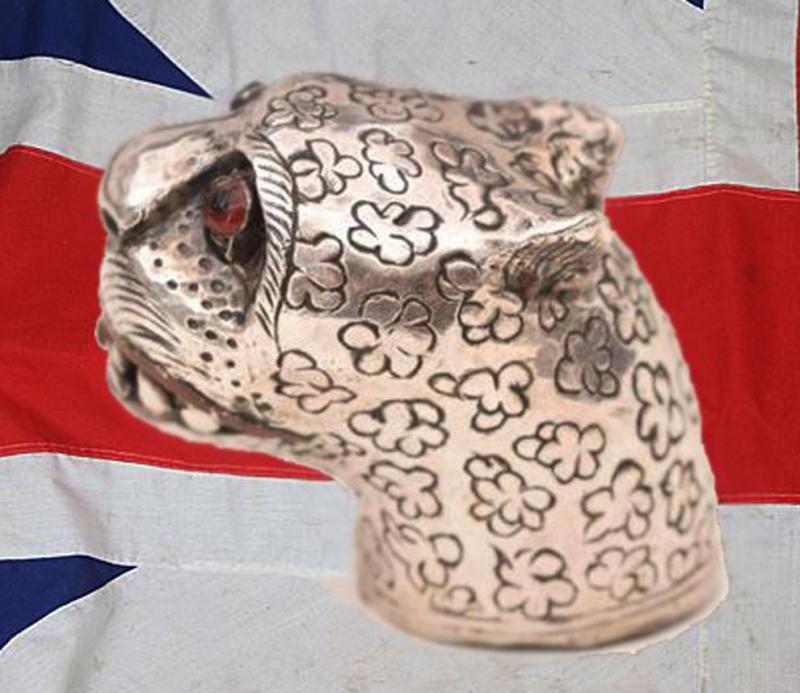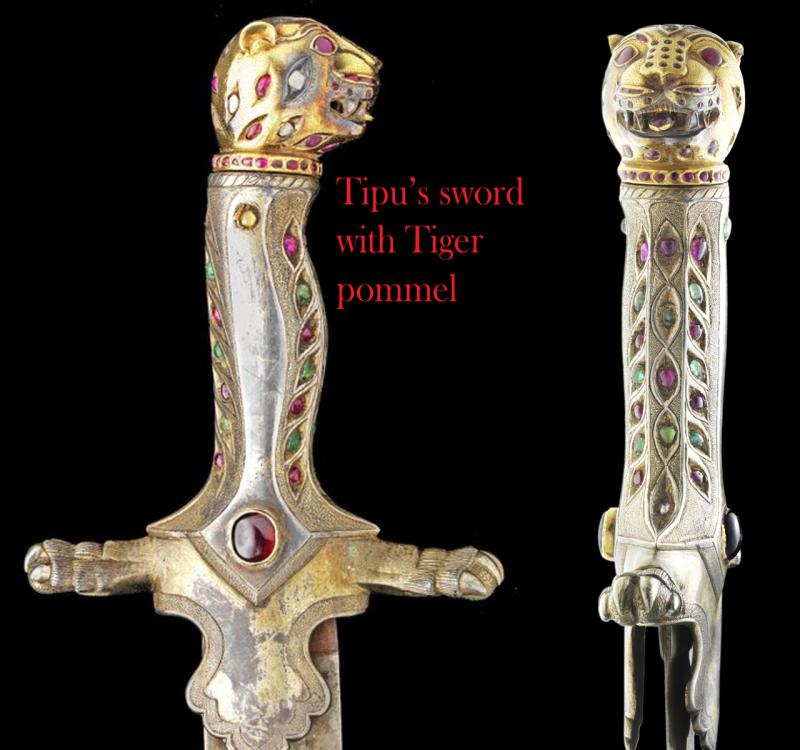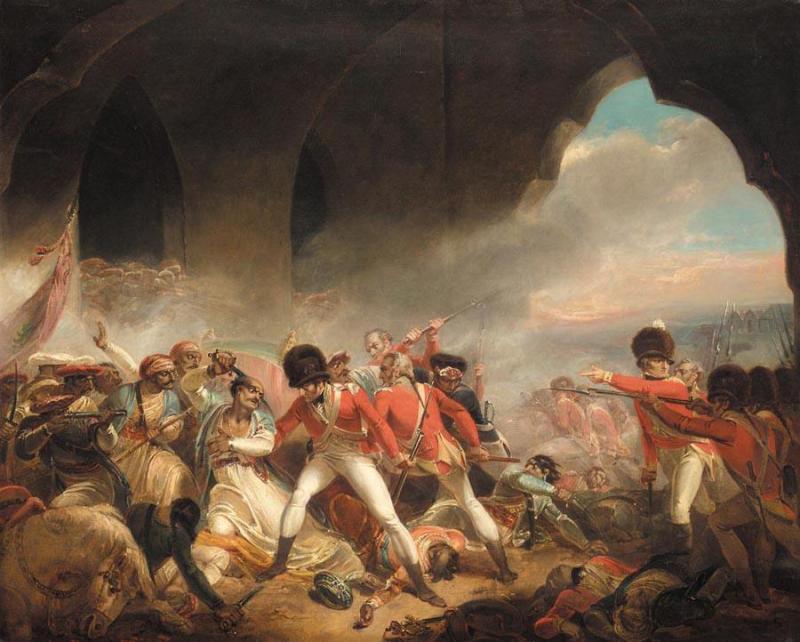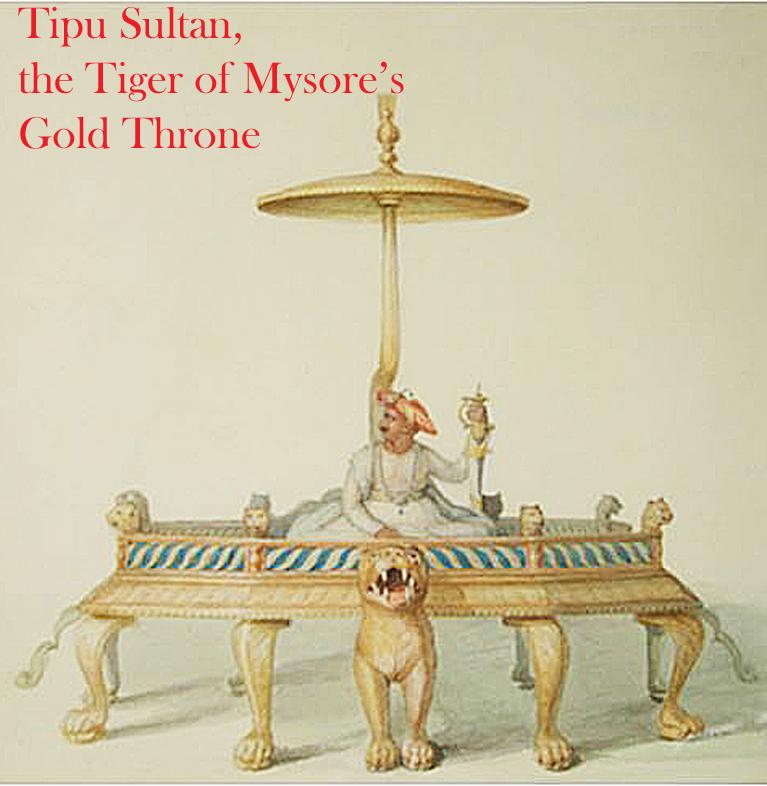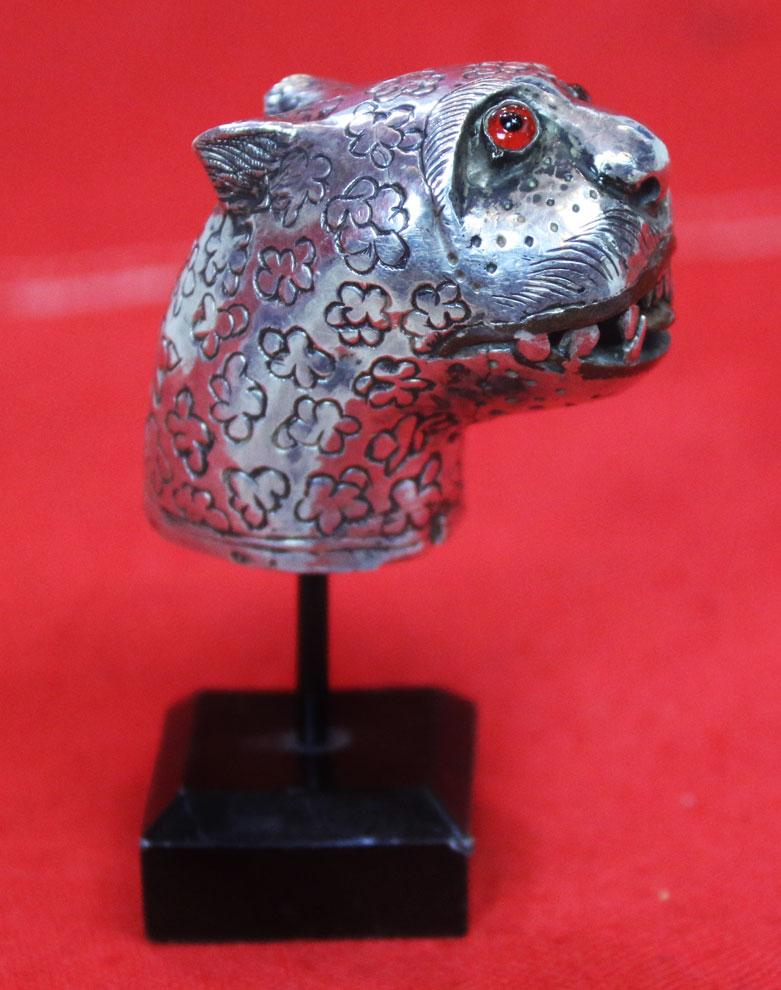A Stunning, Indian Tiger Head, of 'Tipu Sultan' Form, Dagger's Pommel, The Tiger of Mysore, in Silver and Copper With Gem Stone Eyes
Likely used in the era of the Battle of The Siege of Seringapatam (4 May 1799) potentially by one of his highest rank military or vassal. It was the final confrontation of the Fourth Anglo-Mysore War between the British East India Company and the Kingdom of Mysore. The British achieved a decisive victory after breaching the walls of the fortress at Seringapatam (as Srirangapatna was then known) and storming the citadel. Tippu Sultan, Mysore's ruler, was killed in the action. The British restored the Wodeyar dynasty to the throne after the victory, but retained indirect control of the kingdom. All copper gilt hilt and mount. Decorated with a Tiger's head pommel, and fully designed with mask suspension mounts and all over patterning. Tipu Sultan (c.1753–99) the Sultan of Mysore from (1782–99). He inherited the kingdom recently created by his father, Hyder Ali and was a formidable enemy to both the British and neighbouring Indian states. Failure to secure active French support left him without allies in resisting the British. He was finally besieged in his own capital, Seringapatam, when unfounded rumours that he had secured an alliance with Revolutionary France gave the British the necessary pretext for a final assault. He was killed in the attack.
On a number of Tipu's swords, such as those at Powis Castle, near Welshpool; British Museum, London; and Museo Stibbert Museum, Florence, tigers form the hilt, with Tiger of Mysore pommel, Each tiger is of a slightly different design. The tiger and tiger's head denotes the certainty of it having belonged to royalty as none but Princes are allowed to introduce it,' wrote Lord Mornington, the Governor General, in 1800.
Islam did not directly forbid representational, figurative art, but there is no religious tradition governing it as there is with calligraphy and the more geometric decorative arts. Islamic figurative art is generally secular (separated from religion). Representational examples of Islamic art often illustrate battles or animal hunts, and were used to decorate the private apartments of the nobility. Although unfortunately there is no known remaining direct connection with this sword pommel and Tipu Sultan, or Seringapatam, as his swords were usually solid gold, yet it is so similar to the Tiger of Mysore's solid gold tiger heads thus it is to be logically concluded to possibly have been used by a noble/prince in his service, or, at the very least an admirer-supporter.
A photo in the gallery shows the solid gold, Tiger of Mysore, pommelled sword of Tipu Sultan, and a Tipu Sultan, Tiger of Mysore, pommelled dagger. Both gold silver and jewelled, and another Tiger of Mysore, in gold and jewels taken from his disassembled from his throne over 223 years ago, and that tiger of Mysore head sold for around 1.4 million pounds a few years ago.
Code: 24857


